An English (Jacobian) Lock is a type of early flintlock though it was preceded by the snaphaunce and followed by what is generally termed a Doglock (though the English Lock will probably have a dog as well). The English Lock would typically have had a lateral sear as well as bridled featherspring and cockstop. The dog was a safety. The English Lock, Doglock, and the final manifestation of flintlocks are subdivisions of the "common flintlock." Scandinavian flintlocks (sometimes called snaplocks, a term used for other types or almost all types of flint-using locks) might fit in there as part of the earlier timeframe but miquelet locks, which were a long-lived contemporary of all of these, don't...
-
Friends, our 2nd Amendment rights are always under attack and the NRA has been a constant for decades in helping fight that fight.
We have partnered with the NRA to offer you a discount on membership and Muzzleloading Forum gets a small percentage too of each membership, so you are supporting both the NRA and us.
Use this link to sign up please; https://membership.nra.org/recruiters/join/XR045103
You are using an out of date browser. It may not display this or other websites correctly.
You should upgrade or use an alternative browser.
You should upgrade or use an alternative browser.
Pilgrim's Muskets
- Thread starter Asher
- Start date

Help Support Muzzleloading Forum:
This site may earn a commission from merchant affiliate
links, including eBay, Amazon, and others.
The provenance of the NRA's alleged Mayflower gun is exceedingly murky, and there has been no scholarly analysis of the artifact that I know of. Just sayin'.
The description of the evidence that I read seems fairly convincing. Obviously we can never know for sure, but think about it: it was found in what is known to have been John Alden's house, with a stock of European wood (and an American walnut repair), in a space not known to have existed for untold years. If it wasn't his original gun, it seems likely it was imported very soon after.
In Peterson's Arms and Armor in Colonial America there is an inventory list of the common arms supply of the Massachusetts Bay Company from 1630-
80 Bastard Muskets,w snaphances
4 foote in the barrel w/out rests
6 long fowling pieces w/musket bore
6 foote longe,1/2
4 longue fowling pieces w/musket bore
5 1/2 foot long
10 full muskets,4 foot in barrel w/matchlocks and rests
80 Bastard Muskets,w snaphances
4 foote in the barrel w/out rests
6 long fowling pieces w/musket bore
6 foote longe,1/2
4 longue fowling pieces w/musket bore
5 1/2 foot long
10 full muskets,4 foot in barrel w/matchlocks and rests
From the same source a list dated 1626 arms the colonists intended to take with them for 100 men-partial-
2 Partizans for Captain and Lieutenant
3 Halberts for Sargents
80 Bastard muskets w/snaphances 4 foot in the barrel
6 Long fowling pieces w/musket bore 6 foot long,1/2
4 Long fowling pieces w/bastard musket bore 5 1/2 foot long
10 Full muskets,4 foote barrel,w/matchlock and rests
90 Bandoliers for the muskets w/bullet pouch
10 Horn flasks for the long fowling pieces to hold 1 pound apiece
100 Swords and belts
60 Cosletts & 60 pikes
20 Half pikes
There are more references to "matches" than "flints" in old inventory lists and court records until about 1637 when the Pequot War began
2 Partizans for Captain and Lieutenant
3 Halberts for Sargents
80 Bastard muskets w/snaphances 4 foot in the barrel
6 Long fowling pieces w/musket bore 6 foot long,1/2
4 Long fowling pieces w/bastard musket bore 5 1/2 foot long
10 Full muskets,4 foote barrel,w/matchlock and rests
90 Bandoliers for the muskets w/bullet pouch
10 Horn flasks for the long fowling pieces to hold 1 pound apiece
100 Swords and belts
60 Cosletts & 60 pikes
20 Half pikes
There are more references to "matches" than "flints" in old inventory lists and court records until about 1637 when the Pequot War began
Plymouth,1643
Act of the General Court......every able-bodied citizen to possess a musket,either firelock or matchlock....also match,a pair of bandoleers or pouch for powder and bullets,a sword and belt,a worm,a scowrer,a rest and a knapsack.
Act of the General Court......every able-bodied citizen to possess a musket,either firelock or matchlock....also match,a pair of bandoleers or pouch for powder and bullets,a sword and belt,a worm,a scowrer,a rest and a knapsack.
1601phill said:Does bastard refere to rough finish or to un known origin ?Good post by the way .
Bastard in this case referred to bore size basically.A standard British matchlock musket of this period would have commonly been approximately 8 or 10 gauge and weighed 20 pounds or better and used a rest to shoot.A "bastard musket" was of smaller bore and light enough to not require the rest to shoot.The terminology had pretty well faded from use by the Revolutionary War as far as I can tell,probably earlier than that once standardized musket bores and standard patterns developed and became common.
Don't have a listing for him.How about Sir Francis Wyatt in Virginia 1624-Plantation at Pasbehaighs
8 Snaphance Pieces
2 Matchlocks
4 Armours
1 Jack Coat
2 Coats of Mail
1 Steel Coat
1 Corselett
2 Good Headpiece
10 Pounds Powder
60 Pounds Shot
James Town Residence
20 Pounds Powder
180 Pounds Lead and Shot
30 Snaphance Pieces
6 Armors
6 Swords
hmmm Sounds like a "Prepper" don't he. :grin:
8 Snaphance Pieces
2 Matchlocks
4 Armours
1 Jack Coat
2 Coats of Mail
1 Steel Coat
1 Corselett
2 Good Headpiece
10 Pounds Powder
60 Pounds Shot
James Town Residence
20 Pounds Powder
180 Pounds Lead and Shot
30 Snaphance Pieces
6 Armors
6 Swords
hmmm Sounds like a "Prepper" don't he. :grin:
Scots Jim, I happened to order Peterson's book just yesterday. Looks like a snaphaunce would be a far likelier -- safer if you will -- representative of a "Pilgrim long arm" than just about anything.
Regarding the "Alden gun" there's absolutely no proof that John Alden owned that gun. It's highly unlikely he brought it over on the Mayflower. I was always led to believe that wheelocks were rather expensive. How would a 20 year old cooper have the means (and reason) to own such a piece? It may have belonged to Standish or could have been acquired as a novelty by any of the descendants who lived in the house from the 17th to the early 20th century.
I'm really disappointed in the NRA Museum's "Curator's Blog" video (www.youtube.com/watch?v=3OX9ZbF5t3g) where the curator emphatically states that John brought the gun over with him on the Mayflower. He refers to "tight provenance". However, the only provenance he offers is that the gun was found in a "secret compartment" in the house. He also states that John Alden's Will describes the gun in detail. That's interesting because John left no Will and the Probate inventory of his possessions only shows "2 old guns". I believe the NRA's attribution of this piece to John Alden and the Mayflower is, at the very least, sloppy research.
I'm really disappointed in the NRA Museum's "Curator's Blog" video (www.youtube.com/watch?v=3OX9ZbF5t3g) where the curator emphatically states that John brought the gun over with him on the Mayflower. He refers to "tight provenance". However, the only provenance he offers is that the gun was found in a "secret compartment" in the house. He also states that John Alden's Will describes the gun in detail. That's interesting because John left no Will and the Probate inventory of his possessions only shows "2 old guns". I believe the NRA's attribution of this piece to John Alden and the Mayflower is, at the very least, sloppy research.
Bucks,Co see my post in the non-ML forum about being "Very unhappy with the NRA's National Firearms Museum." I, too, came to the conclusion that their evidence is flimsy.
- Joined
- May 24, 2005
- Messages
- 5,438
- Reaction score
- 5,205
An English (Jacobian) Lock is a type of early flintlock though it was preceded by the snaphaunce and followed by what is generally termed a Doglock (though the English Lock will probably have a dog as well). The English Lock would typically have had a lateral sear as well as bridled featherspring and cockstop. The dog was a safety.
Really interesting Thread here. I always learn something on this Forum. Thanks guys for Posting.
Per Alden's mention, here are a couple of pics showing the English Jacobian style lock and an early English doglock showing this transition. JFYI. Thanks again. Rick.
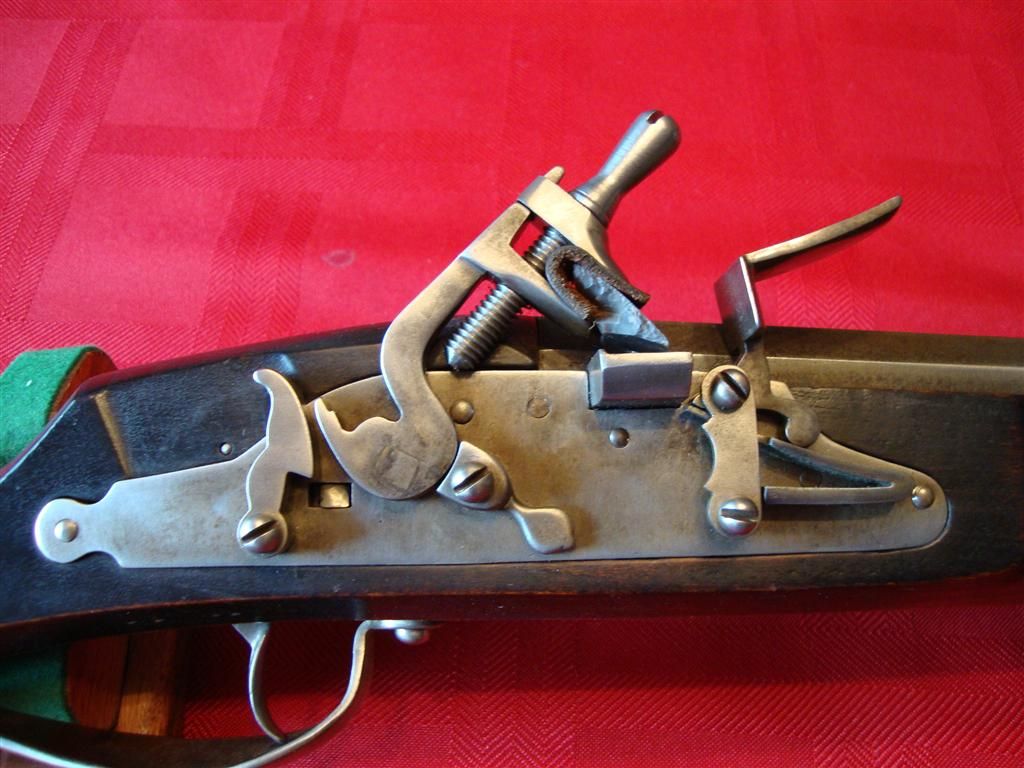
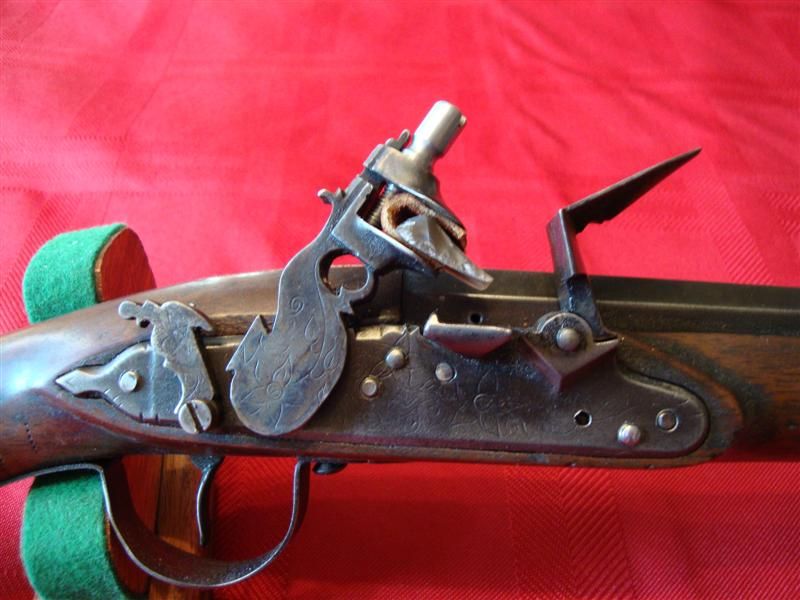
Really interesting Thread here. I always learn something on this Forum. Thanks guys for Posting.
Per Alden's mention, here are a couple of pics showing the English Jacobian style lock and an early English doglock showing this transition. JFYI. Thanks again. Rick.


- Joined
- May 24, 2005
- Messages
- 5,438
- Reaction score
- 5,205
Hi Alden. As you probably guessed, the Jacobian lock English Fishtail gun was made by Leonard Day. I changed the top screw using a copy of the one used on TRS Catalog #579. Thought it looked better (?) :idunno: :haha:
The Doglock is a 1640's English Pistol from TRS Catalog #627, page 34. Kit was assembled and antiqued by custom builder Mike Brooks. Yes, the frizzen spring is internal, as per the original. Come to think of it, I neglected to take a photo of the lock's internals. I can do this if you like. It's most unusual. Meantime, here is some additional photos of the pistol. Hope you like it. Rick. :hatsoff:
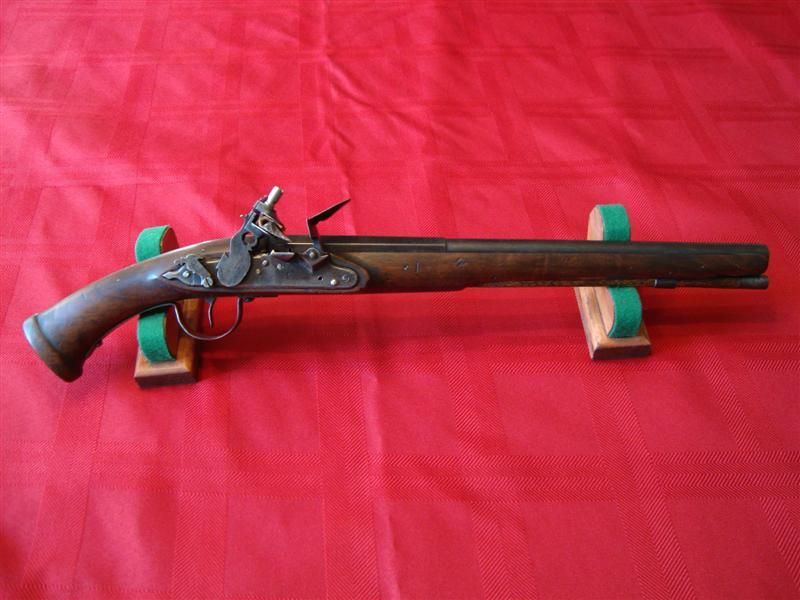
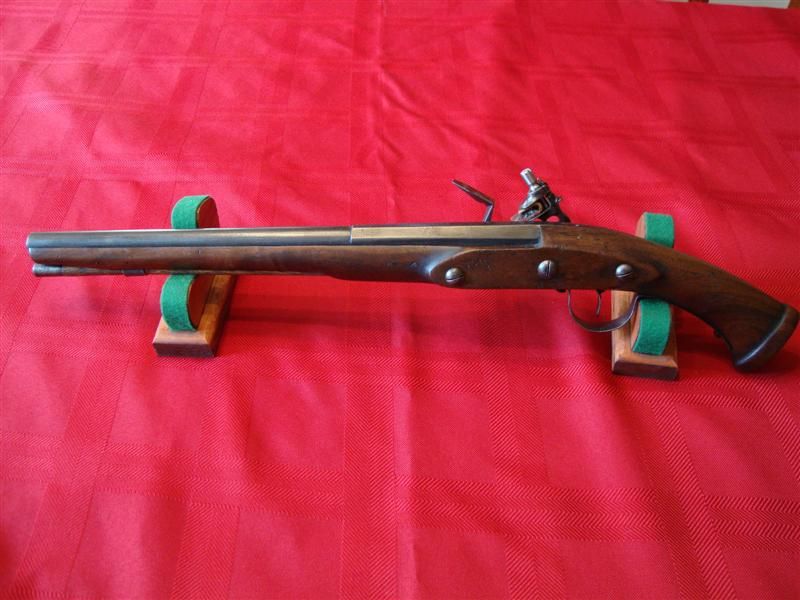
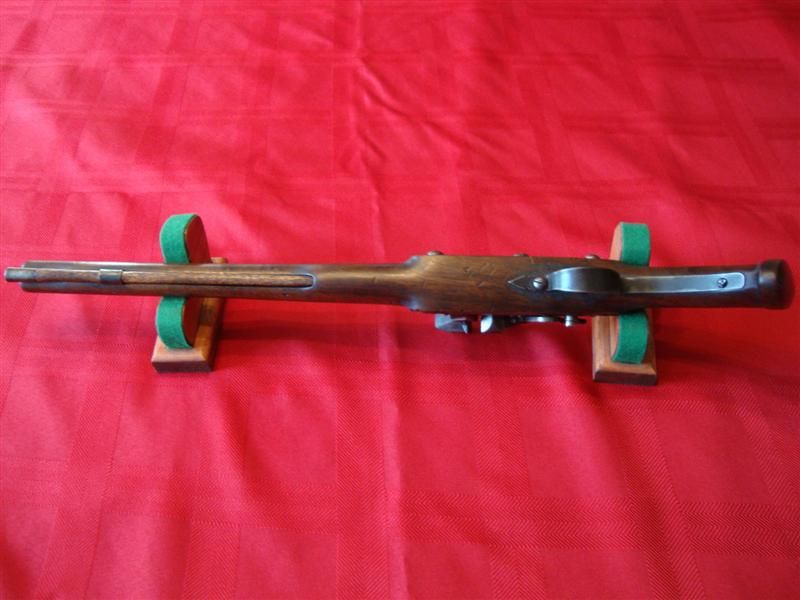
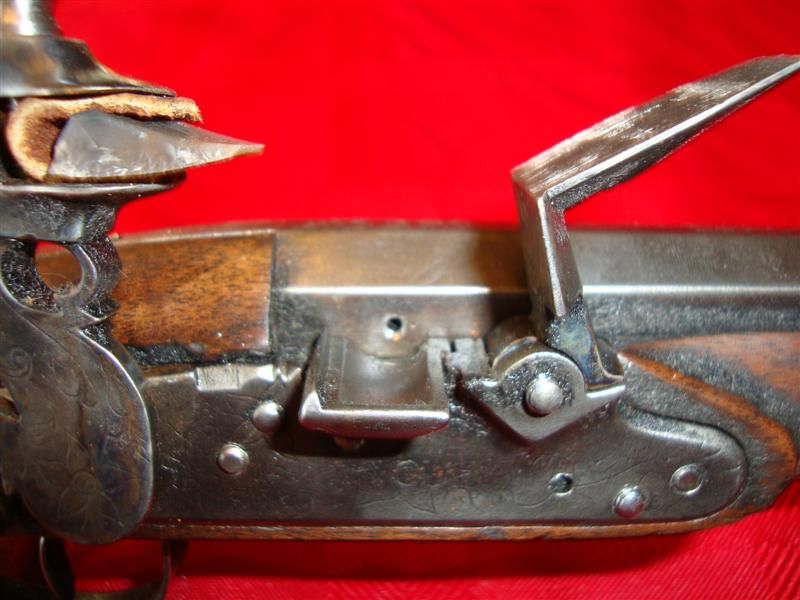
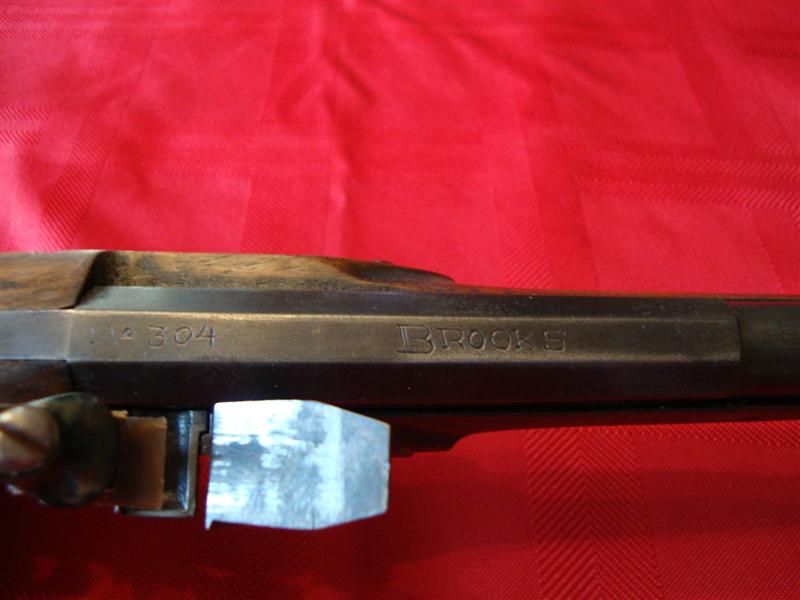
The Doglock is a 1640's English Pistol from TRS Catalog #627, page 34. Kit was assembled and antiqued by custom builder Mike Brooks. Yes, the frizzen spring is internal, as per the original. Come to think of it, I neglected to take a photo of the lock's internals. I can do this if you like. It's most unusual. Meantime, here is some additional photos of the pistol. Hope you like it. Rick. :hatsoff:





- Joined
- May 24, 2005
- Messages
- 5,438
- Reaction score
- 5,205
And notice the pistol still retains the three screw lock. :thumbsup: Rick.
Similar threads
- Replies
- 29
- Views
- 3K
- Replies
- 3
- Views
- 261



